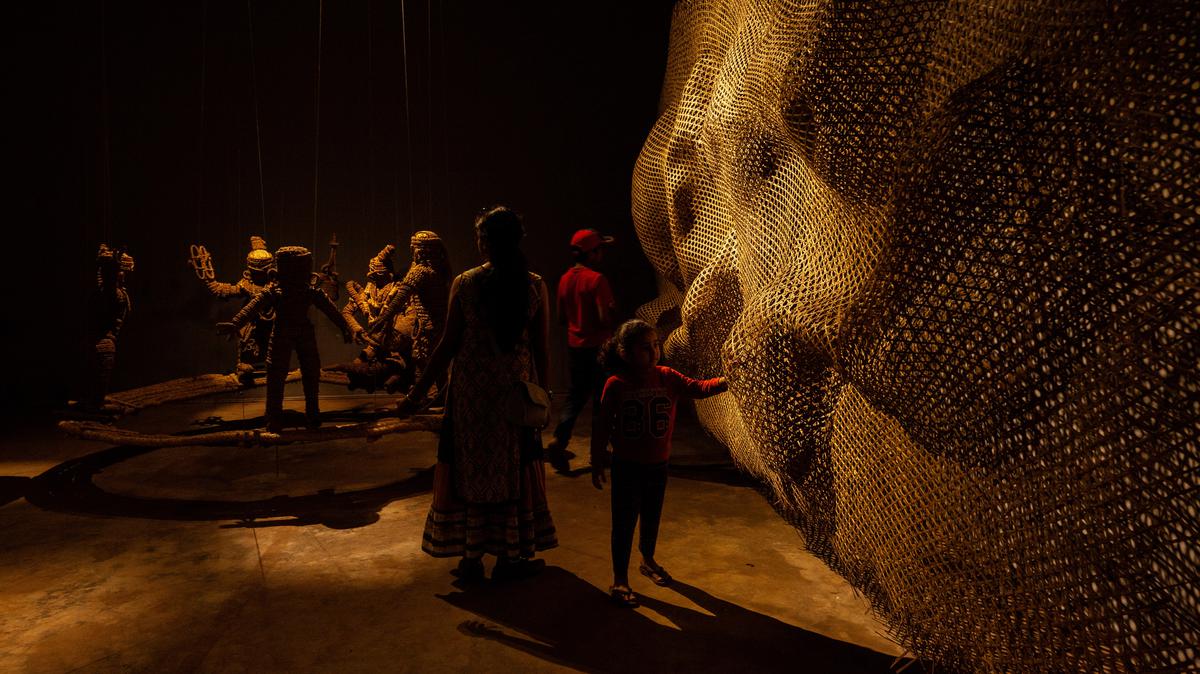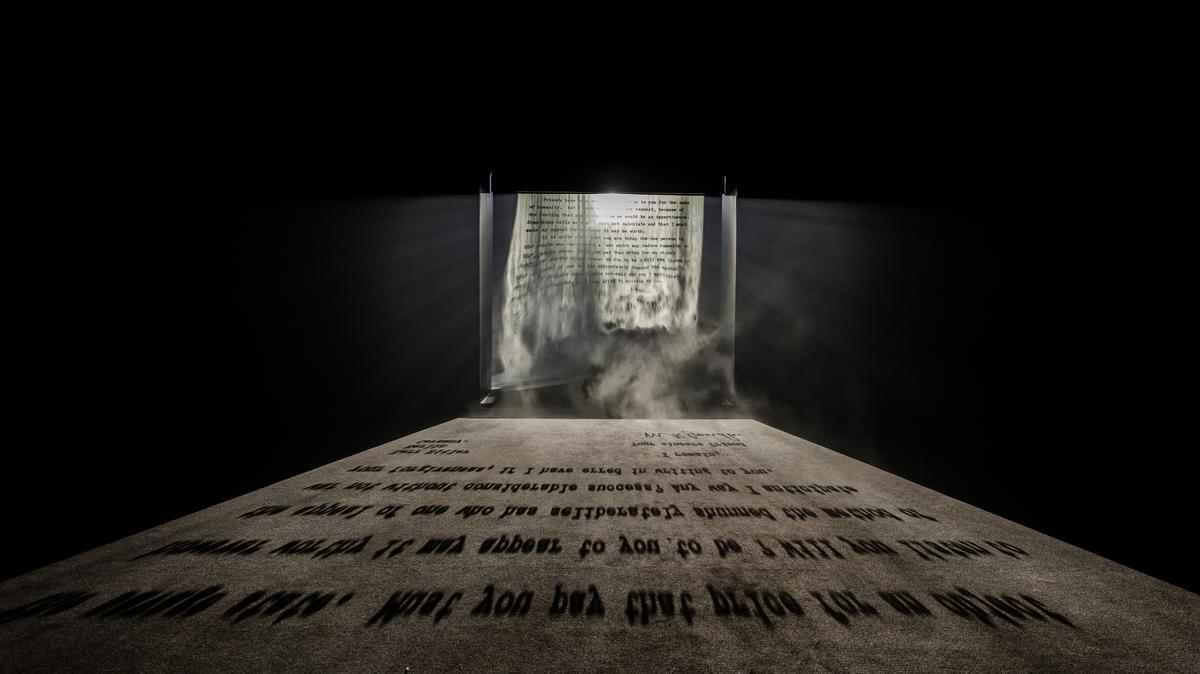DDespite delay in opening Over two lakh people have visited the Kochi-Muziris Biennale 2022-23 In the first month of the biennial contemporary art festival held at various places in Fort Kochi and Mattancherry in Kochi. Curated by Singaporean artist Shubigi Rao, this year’s exhibition titled ‘In Our Veins Flow Ink and Fire’ featured works of 90 artists from across the world.
See also | Why Fort Kochi and Mattancherry became the site of the Kochi-Muziris Biennale
This is the fifth edition of the biennial, which is being organized after a gap of four years as the 2020 edition was canceled due to the COVID-19 pandemic.
In addition to performances by well-known names in the world of contemporary art such as Zhanna Kadyrova, Jitish Kalat, and Masinisa Selmani, many other Indian as well as local artists from Kerala are also featured in the festival. The Students’ Biennale, a comprehensive presentation of works by student artists from 22 art learning centers across the country, is another major attraction.
The main exhibitions, opening on December 23, 2022, will continue through April 10, 2023.
Photo: Ashwin VN
Aspinwall House, a 178-year-old warehouse-turned-gallery, main venue of the Kochi-Muziris Biennale
Photo: Ashwin VN
One of the highlights of the Kochi-Muziris Biennale 2022-23, artist Vasudevan Akkitham’s ‘Almanac of a Lost Year (2020-21)’ is a collection of 365 small watercolor paintings to mark each day of the year that has been COVID- Was lost since 19, like a diary entry.
Photo: Ashwin VN
A clay sculpture installation, part of the exhibition ‘IDAM: Where Being Sprouts Into Language’ at the Durbar Hall Art Gallery in Ernakulam

Photo: Kochi Biennale Foundation
‘Bhoomi’ by Gidri Baoli Foundation of Arts is a community art project created by artisans from four villages in Bangladesh. Displayed at TKM Warehouse, it is a large-scale installation of puppets and mats made using jute and straw to represent the fluid nature of our existence.
Photo: Ashwin VN
The installation ‘The Public Life of Women’ at Paper House in Fort Kochi is a feminist memory project made up of photographs and stories of Nepali women from all walks of life.
Photo: Ashwin VN
Pepper House, a spicewarehouse-turned-gallery, is one of the venues of the Kochi-Muziris Biennale. Apart from the art on display, the Biennale also has the opportunity for visitors to explore the unique history and architectural heritage of Fort Kochi and Mattancherry.
Photo: Ashwin VN
Vasudevan Akkitham’s ‘The Distance’ three-volume oil on canvas paintings tell an almost autobiographical story of a boy who migrates from village to city.

Photo: Kochi Biennale Foundation
Jitish Kalat’s ‘Covering Letter’ displayed at TKM Warehouse depicts Mahatma Gandhi’s famous letter to Hitler as a hazy fog
Photo: Ashwin VN
‘Bombay Tilts Down’ at Aspinwall House, is a multi-channel video installation by collaborative studio CAMP, consisting of tilt-down footage of central Mumbai shot using remote-controlled CCTV cameras.
Photo: Ashwin VN
One of the many video installations at Aspinwall House, the main venue of the Kochi-Muziris Biennale
Photo: Ashwin VN
Visitors are experiencing ‘Such a Morning’, which is made of 62 handmade ramie, cotton and banana fiber papers, including 17 digital video back projections. Edited by Delhi-based artist Amar Kanwar, it explores the question of what it means to see in the dark, and the power of silence and withdrawal during an ongoing crisis.
Photo: Ashwin VN
62 handmade ramie, cotton and banana fiber papers ‘Aisi Subah’ installments
Photo: Ashwin VN
A visitor looking at a photographic installation titled ‘Woh bhi line ka tha’ (He was one of us), in which artist Sandeep Kuriakose gives new meaning and associations in layered forms to seemingly trivial objects found in cruising sites express.
Photo: Ashwin VN
Koviri Rajasekhar’s installation ‘The Other Side of the Geotube’, showcased at the Student Biennale exhibition at VKL Warehouse, depicts the struggle of villagers in Uppada, a coastal village in Andhra Pradesh, ravaged by frequent cyclones and seas . Rajasekhar has used washed and damaged material collected from Uppada to create the installation, giving visitors a glimpse of the devastation caused by climate change and the unscientific seawall project that failed to protect the village.
Photo: Ashwin VN
In the installation ‘The Other Side of the Geotube’, artist Koviri Rajasekhar uses torn jute sacks and bed sheets as a canvas to write and paint the story of Uppada village and the 1.4-metre-long 1.4-metre-high tunnels built using geotubes in 2010. km of seashore, which was later washed away. Destroyed the sea and the lives of the people.
Photo: Ashwin VN
The ‘Art Room’ at Cabral Yard, Fort Kochi, where various art workshops are being conducted daily under the tutelage of trained artists
Photo: Ashwin VN
Children participating in an art workshop in the ‘Art Room’ in Cabral Yard